There’s this weird moment right before your first body massage: you’re half-excited, half-panicked, and trying not to overthink everything. Maybe you’ve heard that massages work magic on muscle knots, or maybe your mate swears by them to banish stress. But what actually happens behind that closed door? Will your back crack like bubble wrap? Do you have to strip down or can you leave your socks on (no judgement—I’ve been there)? If you’ve ever wondered if you’re “doing it right” or how to not look clueless, you’re not alone. Here’s your beginner's cheat sheet, packed with concrete advice and little details people usually forget to tell you about body massage.
Quick Answers: The Essentials of a Body Massage
Not everyone wants to read a novel when they’re about to try something new, so here’s the fast lane:
- Massages typically last 30 to 90 minutes; most common is 60.
- You’ll be asked to undress to your comfort level; therapists keep you covered except the area being worked on.
- Communication is king: tell them if you want more or less pressure, or if something feels off.
- It’s normal to feel relaxed or even sleepy—don’t fight it!
- Drink water after to help flush out released toxins.
| Step | What to Expect |
|---|---|
| Arrival | Fill out a brief health form, meet your massage therapist. |
| Undressing | Undress to comfort, lie under a sheet or towel on the table. |
| Session | Therapist uses oil/lotion, massages one body part at a time, keeps rest covered. |
| End | You get time to re-dress and sip water before heading back out. |
Comprehensive Guide to Your First Body Massage
Picture this: you finally hand yourself over to the soft lighting, mellow soundtrack, and quiet confidence of a trained massage therapist. Maybe you’re running on empty after nonstop deadlines or, like me, you just wrestled your kid Rory out of another muddy football session. You want muscles to melt and worries to disappear, but it’s completely normal to feel awkward about what happens next.
Body massage isn’t some weird ritual. It’s a blend of science and (a little bit of) art that gets under your skin—literally. With the right info and a smidge of courage, a session can turn into 60 minutes you’ll actually look forward to every week. Think of it as a pit stop for your body and brain; you’re handing the keys to an expert who knows how to tune things up, no judgement, no drama.
So what’s the deal? You’ll be guided to a private room where your therapist will explain briefly what will happen. You’ll have privacy to undress (usually to underwear), hop on the padded table, and cover yourself with a big towel or sheet. Only the part being worked will be exposed—your dignity stays put. Good therapists will chat about what hurts, any injuries, and what you’re hoping to get out of it, so you’re in control. If you go for aromatherapy or deep tissue, expect different oils or techniques, but the basics don’t change.
For first-timers, the nerves always spike during the quiet bits—the rustle of towels, the gentle pressure, and that unexpected urge to laugh when they hit a ticklish spot. Don’t stress. You are allowed to close your eyes, zone out, or even talk if it helps. You can also ask for a playlist change if whale songs aren’t your thing. Basically: you call the shots.
Nowadays, most spas and clinics swap biodegradable oils and offer hypoallergenic lotions (great news if allergies bug you), and they keep rooms spotless. Good massage therapists also sanitize hands before touching you—if they don’t, it’s okay to call them out. It’s your body, your session. Expect to walk out with looser muscles, less pain, and a mellow mood that might have you thinking about your next visit before you reach your front door.
What Exactly Is a Body Massage and Why Should You Care?
Body massage is hands-on therapy where the therapist uses pressure, manipulation, and movement on your muscles, skin, and soft tissues. It isn’t just “pushing and prodding;” there’s plenty of evidence from UK health agencies showing it can lower anxiety, decrease pain, and even help with headaches. The World Health Organization called massage one of the oldest healing practices, dating back over 4,000 years. Alexander Technique and Myofascial Release are terms you might see, but at its core, body massage uses touch to kickstart your body’s own recovery tricks.
Why does it matter? Life’s only getting busier; people—especially in urban places like London—spend hours hunched over screens. All that tension collects in necks, lower backs, and shoulders. Without some kind of reset, those knots turn into chronic pain, migraines, and cranky moods. Getting regular massages isn’t just pampering—it’s pre-emptive maintenance. You can think of it like taking your car for an oil change instead of waiting for a breakdown.
What people often miss: massage can also support better sleep. NHS-backed studies have found that even one session a month can improve sleep quality in people with insomnia. It boosts circulation, too, so your muscles get more oxygen (the “fresh start” feeling after a session isn’t placebo!). There’s increasing chatter among doctors here in the UK and abroad about massage being part of mental health care, especially for those with high stress, burnout, or anxiety disorders.
If you’re dealing with stiff joints (hello, anyone over 40), injuries from exercise, or just need a mood lift, massage isn’t a luxury—it’s a tool. And in the post-pandemic world, where touch is finally getting its overdue comeback, the benefits stack up higher than ever.
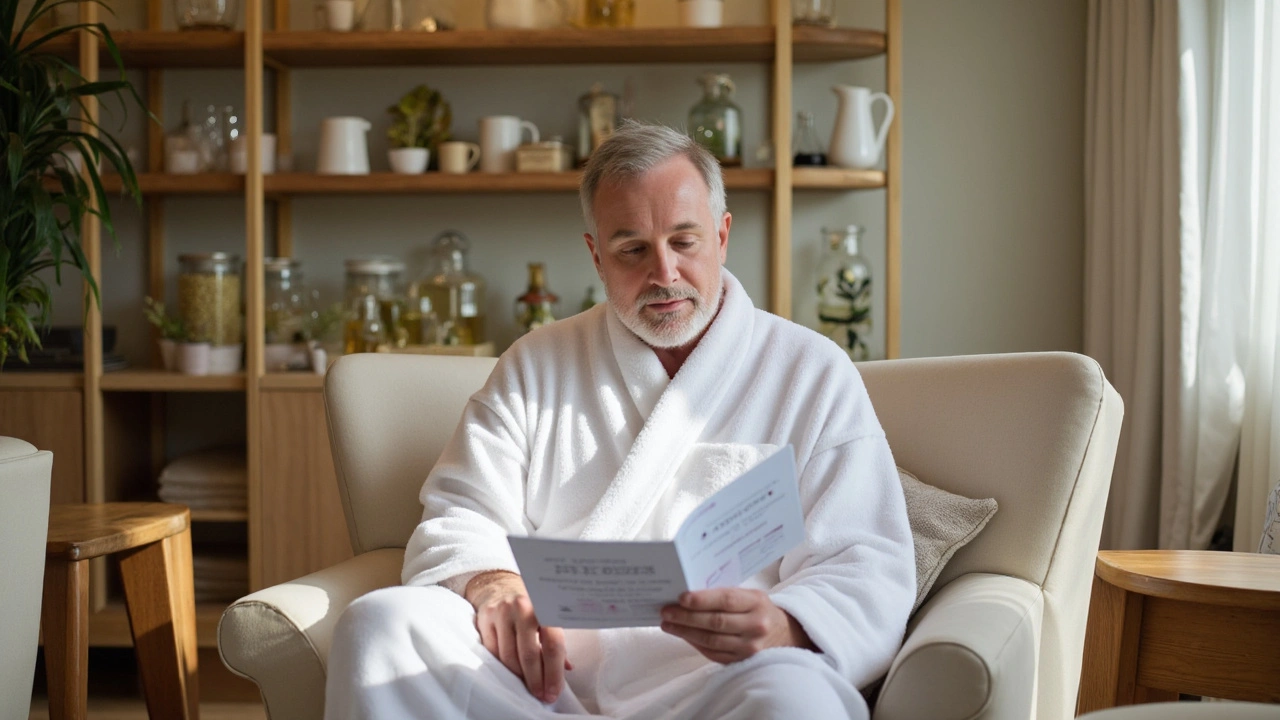
Perks of a Body Massage: Real Results, Not Just Relaxation
Ask anyone who swears by massage, and you’ll hear three words: less pain, more energy. But the list of benefits goes way deeper. Regular body massages boost blood flow, which isn’t just good for your “inner engine”—it also means your skin can glow, muscles recover quicker, and soreness doesn’t linger after workouts. For someone like me who sometimes forgets what “me time” feels like, a one-hour session is like getting a factory reset, mentally and physically.
Let’s get real for a sec. A study from King’s College London in 2022 found that British adults who got at least one massage monthly lowered their stress hormone (cortisol) levels by a massive 20% after eight weeks. That means less anxiety, better sleep, and a sharper mind. And for those stuck at desks or wrangling the kids, loose muscles mean fewer headaches or frozen shoulders.
There’s also a little-known bonus: regular massages can improve flexibility and immune response, according to recent findings in the British Journal of Nursing. Therapists see clients bounce back faster from sports injuries or even manage long-term conditions like fibromyalgia. The bottom line? Massage bridges the gap between physical care and mental wellbeing. If you’ve never tried it for your mood, you might land a pleasant surprise.
Just a tip: always mention medical issues, allergies, or pregnancy before your appointment. Therapists can tailor everything, from the oil they use to the amount of pressure, and a good one will always adjust if something feels wrong. Really, it’s your hour; use it to recharge, recover, or just escape into total peace and quiet.
Body Massage Options in London: What’s on the Table?
London’s massage scene isn’t just about posh spas in Mayfair anymore. Whether you’re after a classic Swedish massage, a deep tissue loosening (my favorite after chasing Rory around), or something fancier like aromatherapy or hot stone, there’s a place for every taste and budget. There’s even “outcall” service where the therapist comes to your flat—ideal if you can’t face leaving the house after a long day.
The main types you’ll spot in London include:
- Body massage: The standard, using oils and adjustable pressure for full relaxation or targeted areas.
- Swedish massage: Light, gentle strokes, perfect if you’re sensitive or just want to relax.
- Deep tissue massage: Works on stubborn knots, often using firmer pressure—bring this up if you’re in pain a lot.
- Aromatherapy: Adds essential oils, supposedly for stress, sleep, or immunity boosts. You get to pick your scent.
- Sports massage: Geared for workout recovery, injuries, or improving range of motion. You don’t need to be an athlete.
- Thai massage: Combines pressure, stretching and yoga-inspired moves; you’re usually clothed for this one.
- Lymphatic drainage: Gentle, slow movements to encourage fluid flow—great for swelling, post-surgery, or detox.
Booking is surprisingly easy: most spots let you do it online, or you can ring up. Prices range from £40 for 30 minutes in a local “high street” clinic up to £120+ an hour in posh urban spas. Don’t be afraid to ask for package deals or first-timer offers; loads of places do “welcome” rates, especially mid-week. Pro tip: always check therapists’ credentials and hygiene standards. Real pros are happy to show you certificates, memberships, or reviews.
Want to find a good spot? Search reviews online, try neighborhood Facebook groups, and check Google Maps for “top rated massage near me.” Don’t pick purely by cost—sometimes the best value is not the cheapest.
| Massage Type | Technique | Best For |
|---|---|---|
| Swedish Massage | Effleurage, light kneading | First-timers, stress relief |
| Deep Tissue | Firm pressure, focused work | Pain, injuries, stiffness |
| Aromatherapy | Oils with massage | Mood, tension, anxiety |
| Sports Massage | Stretching, targeted muscle work | Athletes, active lifestyles |
| Thai Massage | Stretch & press, clothed | Flexibility, energy boost |
| Lymphatic Drainage | Gentle, rhythmic strokes | Detox, post-injury fluid |
How to Prepare, What Happens, and Your Burning Questions
First, don’t show up starving or super stuffed; both will make you uncomfortable on the table. Wear comfortable clothes (think joggers, nothing with lots of zips or buttons). It’s best to skip fragrances or deodorants just before—in rare cases they can mix oddly with oils. Always show up 10 minutes early so you don't rush into the treatment flustered; you’ll need those few minutes to chill and fill out the consultation form.
You can usually keep your underwear on—therapists are pros at working around it. For certain styles (Thai, for example) you’ll stay fully clothed, but for most body massages, undressing to your comfort level is standard. You’re covered with a towel or sheet so you’ll never feel exposed. Therapists uncover just one area at a time (say, your right leg), work on it, and then cover you back up before moving to the next. If you ever feel awkward, cold, or want less/more pressure, just speak up. They honestly appreciate it; you aren’t being fussy.
Mobile phones go on silent—most places ask you to stash them in your bag or locker. No one wants a ‘ping!’ during peak relaxation. Also, let your therapist know if you have injuries (old knee issues, back pain) or if you’re pregnant. They’ll adjust the routine to suit, or recommend a better therapy for your needs. Allergies to nuts or scents in massage oil? Mention it—they always have fragrance-free options.
The massage generally begins with light strokes to warm up your skin and muscles, then the therapist works more deeply. Sometimes you’ll notice clicking or warm spots—that’s blood flow increasing, and it’s a good sign. Falling asleep is more common than you think and snoring isn’t considered a faux pas (it’s happened to me—Rory got a good laugh out of it later).
After the session, you’ll usually be offered water and guided out slowly. Take your time. Standing up too fast can make you dizzy, so go at your own pace. Avoid heavy exercise, hot showers, or alcohol for a few hours to let your body process the benefits. Soreness the day after, especially from deeper work, is normal—but this fades fast and leaves you feeling lighter than before.
FAQ: Your Burning Questions About Body Massage
- Do I really have to get naked? No. Undress to your comfort level. Keep your underwear on if you like. You’re always covered up.
- Does it hurt? Light pressure shouldn’t but deep tissue styles can leave you a bit sore (think gym aches).
- Will I feel awkward? At first maybe, but you’ll relax quickly. Chat with your therapist—good ones make you feel at ease.
- Is it safe if I have a health issue? Usually, but mention anything (heart, pregnancy, injuries) during booking—they’ll advise best options.
- How often should I get one? Monthly is typical, but you can go more or less often depending on needs and budget.
Ready to try a session? Book one and see if you’re not floating home. And if you want to aim for that “just stepped out of the spa” feeling more often, check ongoing deals or ask for loyalty offers—you never know what’s waiting for you.

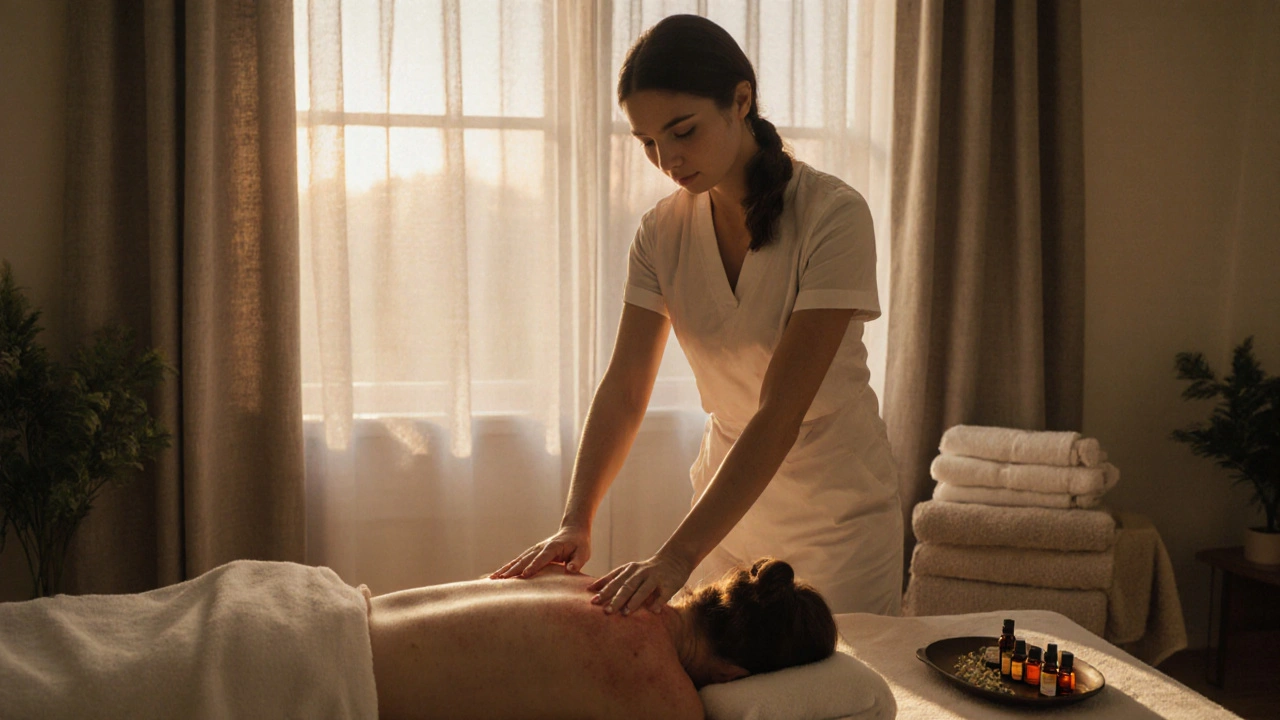
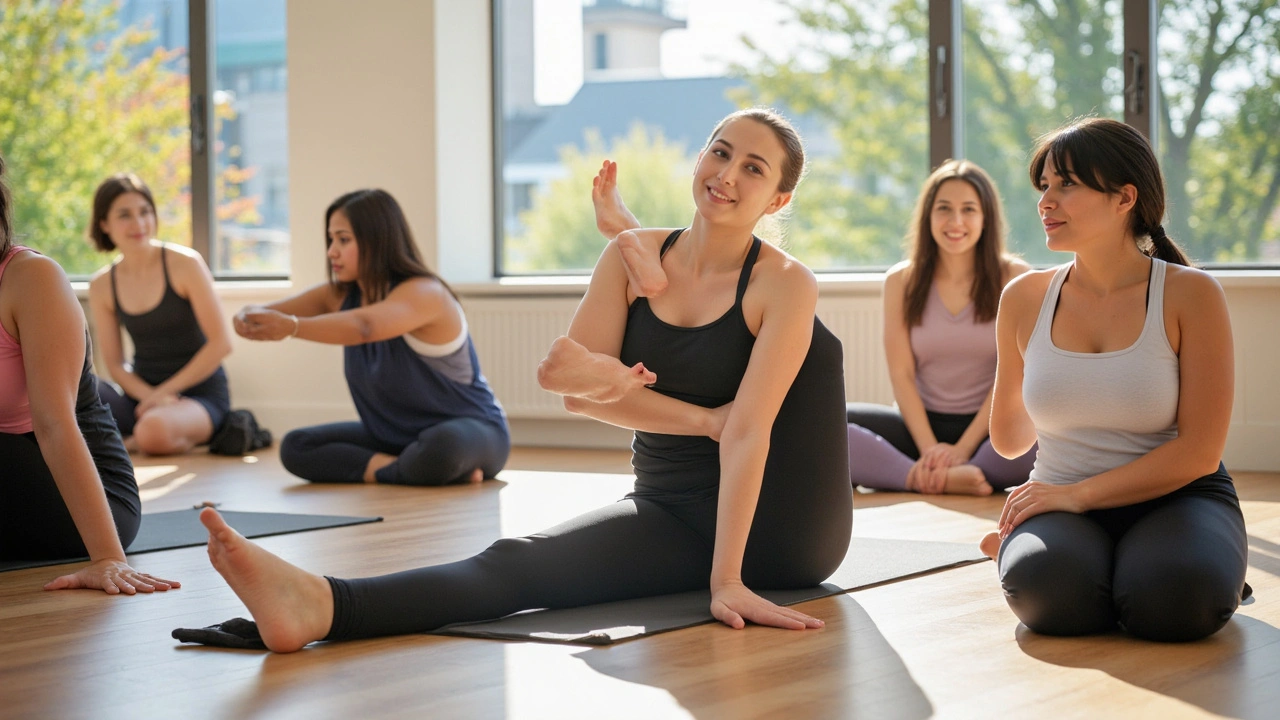
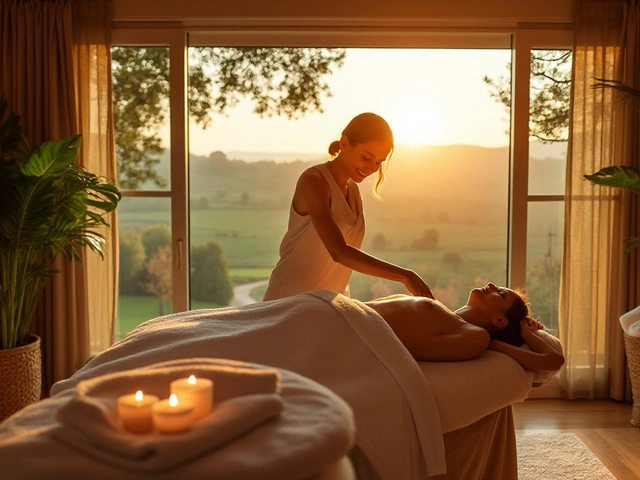

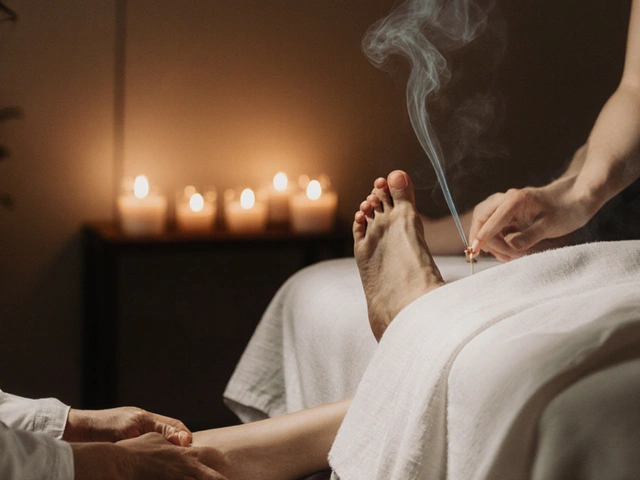


Sriram T
August 8, 2025 AT 14:04Oh, honestly, if you think a body massage is just about lying there and getting pampered, you’re in for a surprise! 😒 I literally can’t believe how many people stroll in with zero prep and then whine about the discomfort.
First off, you gotta get your mind in the right place. This isn’t a magic rubdown. It’s an art, a science even, tapping into your body’s deepest tensions.
Also, hydration is key! Don’t show up dehydrated and expect to feel like a new you afterward. Utter madness.
And please, for the love of all that's majestic, choose your therapist wisely. It's not just some scrub with hands; it's a skilled professional, not a random dude off the street.
Trust me, if you follow the guide here, your first massage will feel less like a chaotic experiment and more like a splendid initiation into wellness. Get ready to be subtly transformed, my friend.
Jonny BiGSLiCE
August 12, 2025 AT 08:06This is a wonderful intro for those uncertain about trying their first massage. It’s fascinating how something so simple seemingly, like massage, can have profound effects on one’s psyche and physiology.
Preparing mentally and physically can enhance not just the experience but also the outcomes. Being open to the sensation and not judging oneself or the process is crucial.
Also, respecting the therapist’s expertise and sharing any relevant health information can help tailor the session to individual needs.
In essence, a massage is a temporary retreat—a mindful pause to reconnect with our corporeal being.
I appreciate guides like this that demystify what can feel intimidating to beginners.
Luke Ollett
August 15, 2025 AT 12:39Alright, listen up folks. If you’re going to enter the sacred realm of professional massage, you better come prepared with both humility and clear communication.
Don’t just flop on the table and expect miracles. Speak up about pressure preference, sensitive spots, and any discomfort.
Hydrate before and after. Stretch lightly. And for heaven’s sake, shower beforehand—there’s a reason spas emphasize this.
This article hits the key points nicely but let me emphasize: Your attitude shapes the session's success as much as the therapist’s skill.
Finally, treat that time as a holistic process. It’s not just physical but mental welfare we’re after here. Now go forth and relax responsibly.
Trent Thevenot
August 18, 2025 AT 22:46One must acknowledge that the mystique surrounding body massage stems from both ignorance and cultural misunderstandings.
The guide here attempts to pierce through that mist, outlining thoughtful preparation strategies that elevate the experience beyond mere physical touch.
Indeed, the art of massage is intimately tied to the human condition – it is a dialogue between practitioner and client, an exchange where vulnerability and trust play pivotal roles.
Unfortunately, many novices enter the session with expectations grounded in fantasy rather than reality, setting themselves up for disappointment.
Thus, education is paramount. This post is a valuable step towards that enlightenment.
Kiana Rigney
August 22, 2025 AT 06:06Honestly, isn’t it kind of exhausting how everyone suddenly turns into experts on relaxation the moment they hear the word massage?
This post is dripping with that irritating over-simplification of 'just show up and chill.' It’s a complex, multidimensional ritual that you can’t just wing based on some casual guide.
There are biochemical and neurological intricacies at play, folks. Please, before you go sprinkling advice, get a clue about fascia, the nervous system, and how stress hormones interfere with genuine relaxation.
Truth be told, a 'friendly guide' like this skirts around the challenging realities of human somatics.
For those truly interested, dive deeper or stay ignorant and keep pretending massages fix everything instantly.
Hannah Johnson
August 25, 2025 AT 13:26Great post! This is exactly the kind of info folks need before trying out their first massage.
One thing I’d add is don’t hesitate to speak up during the session if something feels uncomfortable or if you want the pressure adjusted. Your therapist wants to make your experience as beneficial as possible.
Also, wearing comfortable clothes and avoiding heavy meals before your appointment makes a difference.
It’s normal to feel a little anxious beforehand, but once the session starts, try to focus on your breathing and let go of stress.
Thanks for putting this guide together – it helps demystify the whole process for beginners!
Anna Krol
August 28, 2025 AT 20:46I like how this guide encourages a friendly and clear approach to preparing for a massage, especially for newbies.
It's interesting to think about how cultural differences can influence our comfort levels with touch and vulnerability during massage sessions.
Preparation isn’t just physical — it’s emotional and psychological too. Being open to the experience and communicating your needs is vital for a positive outcome.
Plus, small things like avoiding caffeine beforehand and having clean skin make a big difference.
Overall, this post is a solid starting point for anyone curious but feeling apprehensive about their first massage.
Chaunt Elyza
September 1, 2025 AT 04:06Ugh, I don’t know...
This post sounds like a basic PSA for boomers afraid to try something new. 🙄 Anyone with a shred of common sense knows to shower, be courteous, and speak up.
The whole thing is just exhausting to read for some supposed beginner’s guide.
If you’re gonna get a massage, just chill and enjoy the damn thing instead of overthinking every step.
And y'all, don’t forget to tip your therapist properly. They deserve it.
💅💆♀️Katie Schiffer
September 4, 2025 AT 11:26Hey folks! Totally loving this post because it breaks down the basics without sounding intimidating.
I used to be terrified of massages, thinking it’d be awkward or weird. But a great therapist sets the vibe just right.
Remember, you control the session — pressure, focus areas, and breaks are all up to you. Don’t hesitate to say exactly what you want.
Also, try to arrive a little early to relax and maybe sip some water to stay hydrated.
This post really encourages newbies to embrace self-care — and that’s awesome! You deserve to feel great.
John Irving
September 7, 2025 AT 14:01Honestly, it's baffling how so many people underestimate something as fundamental as body hygiene and basic etiquette when attending a massage. Seriously.
If you present yourself well, show respect to the therapist, and understand the process, the experience will be vastly superior.
The guide posted here covers these essentials well but to really benefit, one must approach with discipline and mindfulness.
Massages are a privilege, not a right. Treat them as such and perhaps we might all reclaim some middle ground currently lost to laziness and entitlement.